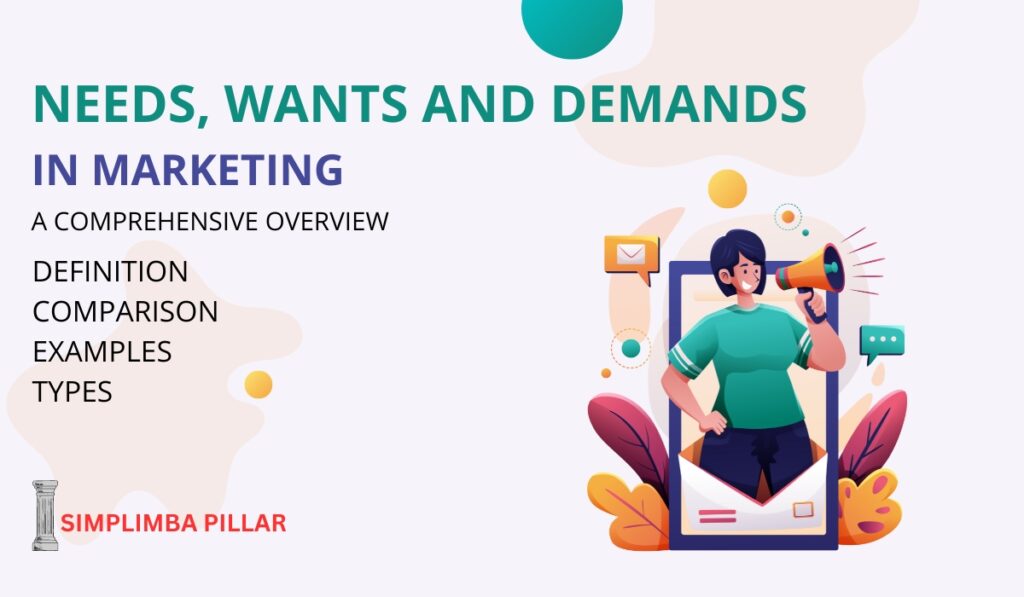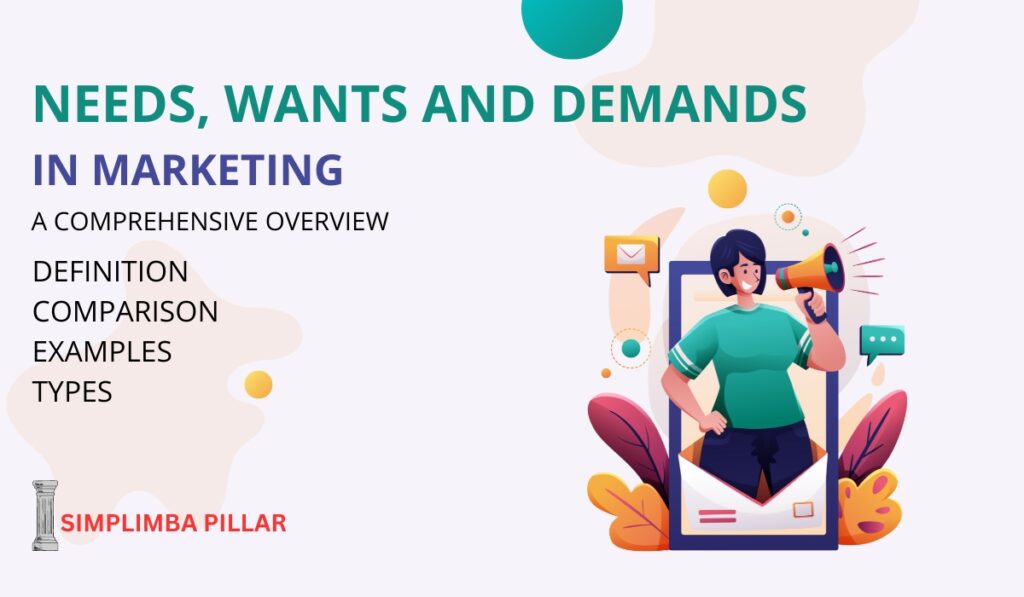
Introduction
In our everyday lives, we’re constantly bombarded by various products and services that claim to improve our lives, making it difficult to differentiate between what we genuinely need, want, or demand. To make better choices, it’s crucial to understand the basic difference between needs wants, and demands. In this article, we’ll break down these concepts with examples and explore how they shape our consumer behavior. From the creation of social packages to the delivery of widely used mobile applications, a clear understanding of Needs Wants and Demands in Marketing helps in creating personas that help in the segmentation and targeting of customers.
Defining Needs Wants and Demands in Marketing
To grasp the distinction between needs wants and demands, let’s step ahead and first define each term:
Defining Needs
Needs are the basic requirements for survival and well-being of human beings, unlimited needs such as food, water, shelter, clothing, and healthcare. These are essential for a person’s physical and emotional well-being.
Defining Wants
Wants, on the other hand, desire for products or services that aren’t essential for survival and basic human requirements, but improve our quality of life. These can include items like the latest gadgets, fashionable clothes, or luxury vacations.
Defining Demands
Demands refer to wants that are backed by purchasing and buying power alone. It’s the point where a consumer has the ability and willingness to pay for a product or service to satisfy their wants and underlying needs.
Needs, wants and demands in marketing with examples
It’s important to recognize that the line between needs and wants is often blurred. For instance, while a person might need a phone for communication, they might want a high-end smartphone with advanced features.
Examples of Needs
A balanced diet to maintain good health
A comfortable and safe place to live
Access to medical care and education
Examples of Wants
A fancy car for commuting instead of a more affordable one
A large flat-screen TV for entertainment purposes
High-end fashion items or designer clothing
Examples of Demands in marketing
A customer willing to pay for a gym membership to maintain their fitness
A parent purchasing an expensive gaming console for their child
A foodie who frequently dines at expensive restaurants
Difference between needs wants and demands in marketing
Understanding the difference between needs wants, and demands are crucial as it influences consumer behavior. For instance, consumers will prioritize fulfilling their needs, while their wants and demands may be influenced by factors like budget, social status, and personal preferences.
Although it’s challenging to convey emotions in a tabulated format, we have tried to create a table that highlights the key differences between human needs, wants, and demands while maintaining an emotional tone.
| Aspect | Needs | Wants | Demands |
| Definition | Essential requirements for survival and well-being, such as food, water, shelter, clothing, and healthcare. | Desires for non-essential products or services that enhance our quality of life. | Wants backed by purchasing power – the ability and willingness to pay for a product or service. |
| Nature | Basic, fundamental, and intrinsic to human life. | Non-essential, influenced by personal preferences, social norms, and aspirations. | Driven by wants and the financial capacity to acquire desired products or services. |
| Examples | A balanced diet, a safe place to live, access to medical care. | A balanced diet, a safe place to live, and access to medical care. | A luxury car, a large flat-screen TV, and designer clothing. |
| Emotional Aspect | Needs are deeply rooted in our physical and emotional well-being, evoking feelings of safety and comfort when met. | Wants appeal to our desires and dreams, bringing joy, excitement, or a sense of belonging. | Demands reflect our aspirations and financial capabilities, often linked to feelings of achievement or success. |
| Priority | Needs are of the highest priority, as they are essential for survival and well-being. | Wants are secondary to needs and may be fulfilled based on available resources and personal values. | Demands are influenced by budget, personal preferences, and social factors, and may vary in priority. |
Types of Needs
In marketing, understanding various types of customer needs is crucial for developing effective strategies and creating value for the target audience. Here are five types of needs in a marketing strategy:
Functional needs: Functional needs are the most basic customer requirements, referring to the practical utility and performance of a product or service. Customers seek products and services that fulfill a specific function or solve a problem. For example, purchasing a smartphone to stay connected or buying a car for transportation purposes. Marketers must ensure that their offerings effectively address these functional needs to satisfy their customers.
Emotional needs: Emotional needs pertain to the feelings and psychological desires that customers associate with products or services. These needs often involve creating positive emotions, such as joy, excitement, or a sense of belonging, or alleviating negative emotions, like stress, anxiety, or loneliness. Brands can address emotional needs by cultivating a strong brand identity, forging emotional connections with their own target market or audience, and leveraging storytelling to evoke desired emotions.
Social needs: Social needs are related to a customer’s desire for social acceptance, a status symbol, and affiliation. People often purchase products or services to fit in with their social circles, improve their social standing, or maintain a particular image. Marketing strategies that address social needs can involve endorsements from influencers, creating a sense of exclusivity or community, and associating the brand with specific lifestyles or social groups.
Personal needs: Personal needs refer to a customer’s desire for self-expression, individuality, and personal growth. These needs are often addressed through product customization, unique designs, or niche offerings that cater to specific interests or hobbies. To satisfy personal needs, marketers can offer personalized products or services, focus on distinctive styles, and emphasize the unique characteristics of their own category product offerings.
Unperceived needs: Unperceived needs are customer requirements or desire that the customer may not be aware of or has not yet recognized. These needs can represent untapped opportunities for businesses to create innovative products or services that fulfill previously unmet customer needs. To identify and address unperceived needs, marketers can conduct market research, analyze customer behavior, and stay informed about emerging trends and technologies.
Types of Wants
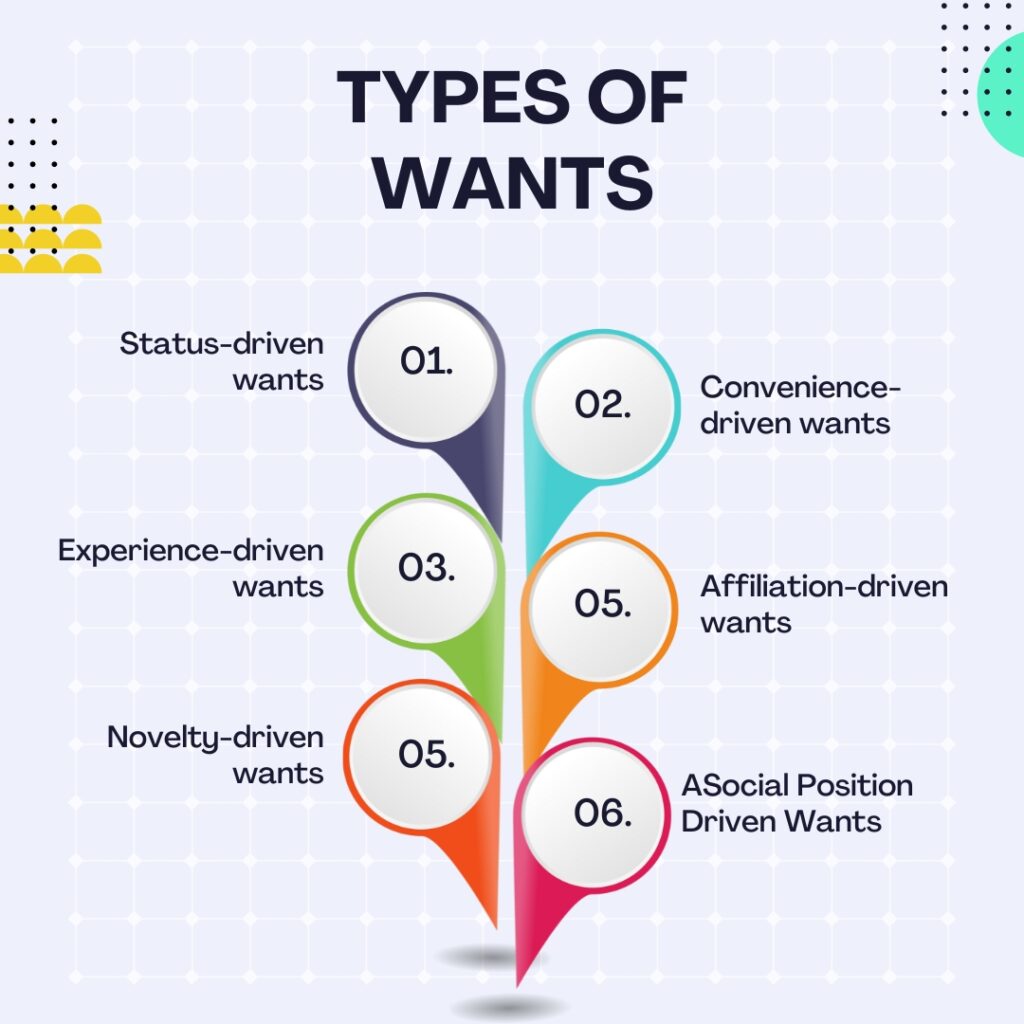
Status-driven wants: These wants are related to a customer’s desire to enhance their social standing or image. Products or services that cater to these wants often involve using luxury brands or high-end items, exclusive experiences, or limited-edition products. Marketers can address status-driven wants by positioning their brand as aspirational, emphasizing quality and craftsmanship, and utilizing influencers or celebrity endorsements.
Convenience-driven wants: Convenience-driven wants to arise from a customer’s desire for ease, accessibility, and time-saving solutions. Customers may want products or services that simplify their daily lives, streamline tasks, or offer hassle-free experiences. To cater to convenience-driven wants, marketers can focus on user-friendly designs, efficient customer service, and innovative solutions that minimize effort or time spent on specific tasks.
Experience-driven wants: Experience-driven wants to involve a customer’s desire for memorable, engaging, or immersive experiences. These wants can include unique travel experiences, interactive entertainment, or personalized services. Marketers can address experience-driven wants by creating memorable brand touchpoints, storytelling, and offering experiential marketing events or activities.
Aesthetic-driven wants: Aesthetic-driven wants refer to a customer’s appreciation delight need for beauty, design, and visual appeal in products or services. Customers may want products that are visually appealing, feature unique designs, or have a specific style. To cater to aesthetic-driven wants, marketers can emphasize product design, utilize appealing visual elements in marketing materials, and collaborate with artists or designers.
Affiliation-driven human wants: Affiliation-driven wants are related to a customer’s desire for social connection, belonging or identification with a particular group or community. Customers may want products or services that align with their values, interests, or lifestyles and help them forge connections with like-minded individuals. Marketers can address affiliation-driven wants by building a strong brand community, aligning with specific causes or interests, and promoting shared values.
Novelty-driven wants: Novelty-driven wants to involve a customer’s desire for newness, innovation, or unique experiences. Customers may want the latest products, cutting-edge technologies, or trend-setting services. To cater to novelty-driven wants, marketers can emphasize innovation, stay informed about emerging trends and technologies, and create marketing campaigns highlighting the unique aspects of food companies and their offerings.
Types of Demand in Marketing
Derived demand: Derived demand occurs when the demand for one product or service depends on the demand for another product or service. This type of demand is common in B2B (business-to-business) industries, where the demand for raw materials, components, or services is driven by the demand for the final products they are used to produce. Marketers can address derived demand by understanding the needs of their business clients and offering solutions that enhance the value of the final product.
Latent demand: Latent demand refers to a situation where there is a strong consumer desire for a product or service, but the current market offerings do not meet the customer’s expectations or requirements. Latent demand represents an untapped market opportunity for businesses to create innovative products or services that fulfill previously unmet customer needs. Marketers can identify and address latent demand through market research, customer feedback, marketing management and trend analysis.
Seasonal demand: Seasonal demand occurs when the demand for a product or service fluctuates based on seasonal factors, such as weather, holidays, or cultural events. Businesses in the hospitality industry can address seasonal demand by adjusting their marketing strategies, promotional activities, and inventory management to cater to the specific needs and preferences of customers during different times of the year.
Declining demand: Declining demand refers to a situation where the demand for a product or service decreases over time due to changing consumer preferences, technological advancements, or market saturation. Marketers can address declining demand by identifying the root causes of the decrease, repositioning the product or service, or innovating to create new market opportunities.
Negative demand: Negative demand occurs when customers actively avoid a product or service due to negative perceptions or experiences. This type of demand can arise from product issues, poor customer service, or unfavorable public relations incidents. Marketers can address negative demand by resolving the various underlying customer and issues, rebuilding the brand’s reputation, and communicating effectively with customers to regain trust and loyalty.
Elastic demand: Elastic demand refers to a situation where the demand for a product or service is sensitive to changes in price. In cases of elastic demand, even small price changes can result in significant changes in the quantity demanded. Marketers can address elastic demand by implementing price optimization strategies, offering discounts or promotions, or creating value-added bundles to attract price-sensitive customers.
The Psychological Factors Behind Needs Wants and Demands in Marketing
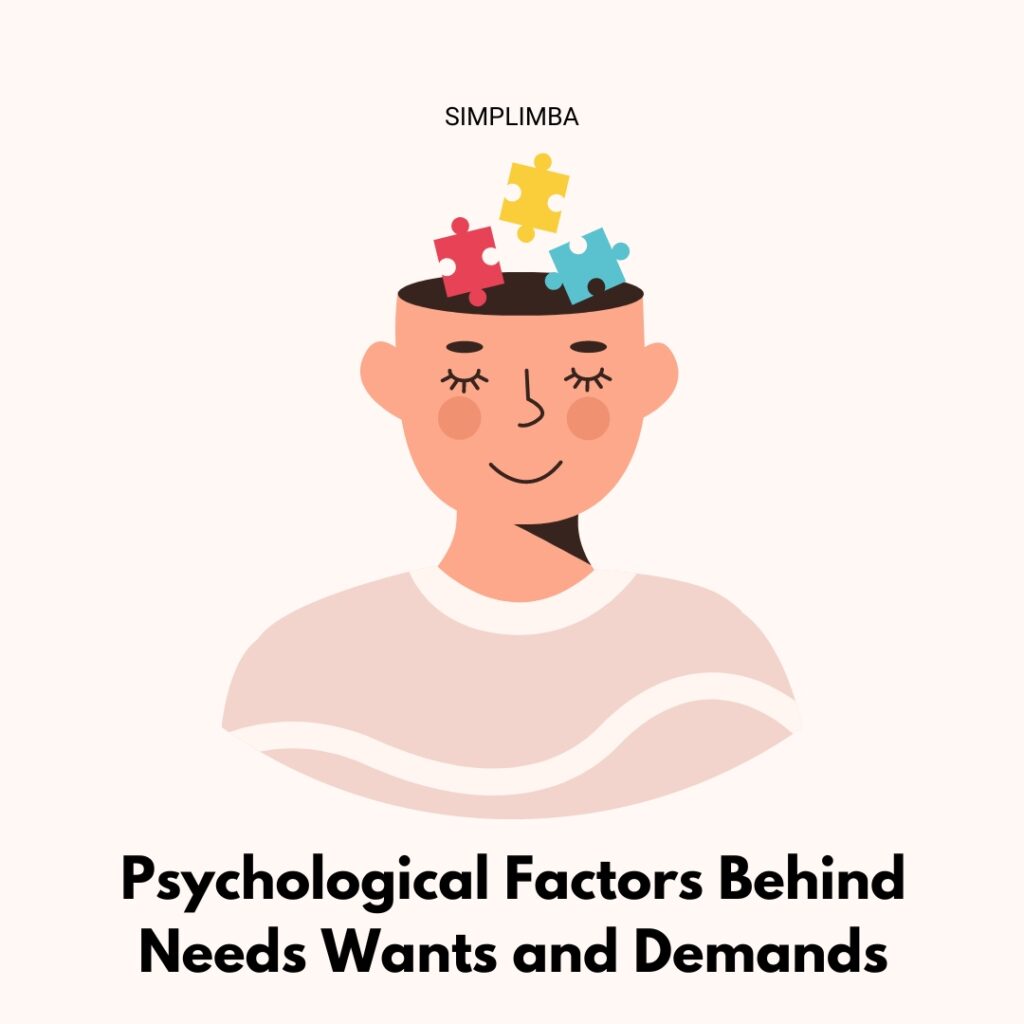
Our emotions play a vital role in shaping our needs wants and demands in today’s world. Feelings of love, belonging, and self-esteem can influence our purchasing decisions, leading us to seek out products or experiences that make us feel valued and connected.
The Impact of Society and Culture on Needs Wants and Demands
Society and culture also have a profound effect on our individual perception of needs wants and demands. Social norms, traditions, and values can shape what we consider essential or desirable, influencing our consumer behavior.
The Role of Technology in Shaping Needs Wants and Demands
Technological advancements have transformed our lives, creating new needs wants, and demands. For example, smartphones and other social networking sites and media have become essential for many people, altering how we communicate, work, and interact with the world.
Sustainable Consumption and the Environment
As we strive to fulfill our needs, wants, and demands, it’s vital to consider the impact of our consumption on the environment. Sustainable consumption means using resources wisely and reducing waste, ensuring that we meet our needs without compromising future generations’ ability to do the same.
Correlation between Maslow’s laws of hierarchy and Needs Wants and Demands
Maslow’s Hierarchy of Needs is a psychological theory that offers valuable insights into understanding the relationship between needs, wants, and demands. This framework can help us better comprehend the driving forces behind our consumption patterns and the emotional aspects that influence our decision-making.
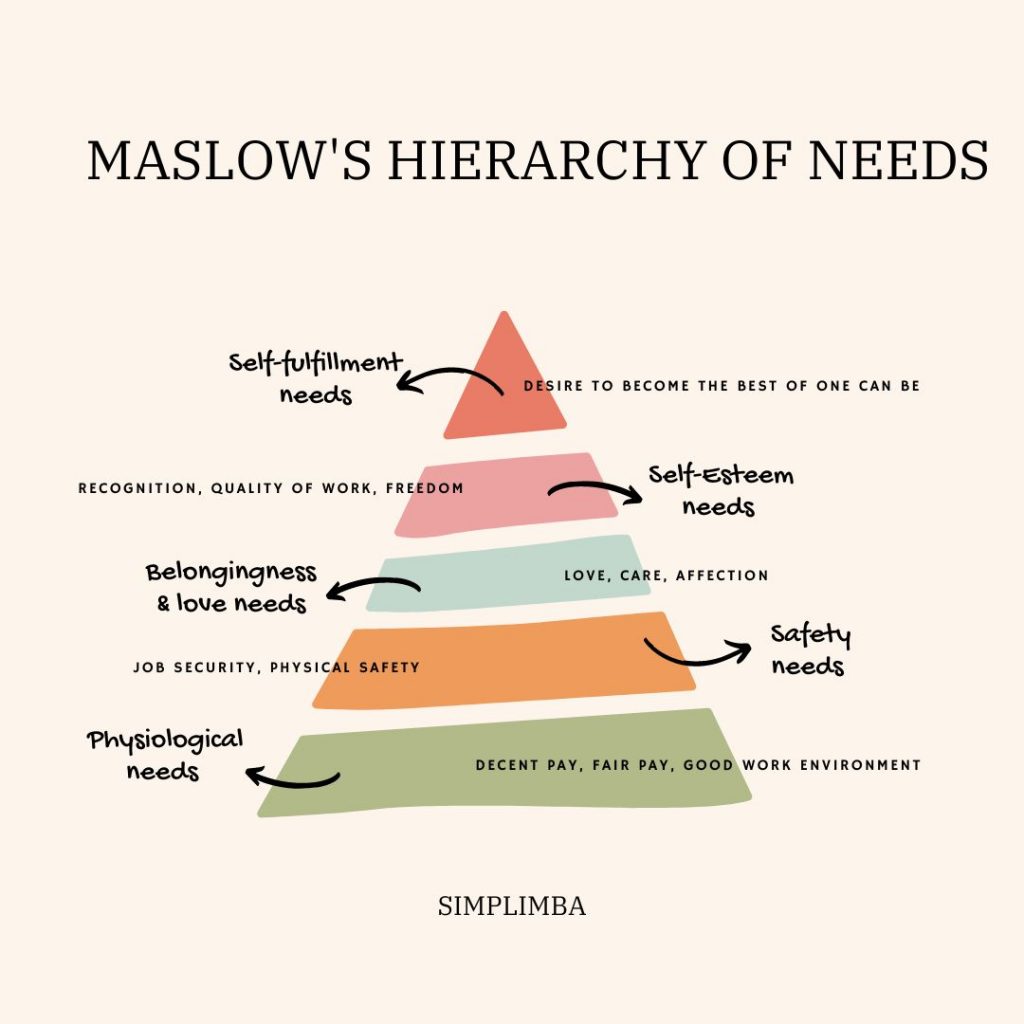
Connecting Maslow’s Hierarchy of Needs to Needs, Wants, and Demands
Maslow’s Hierarchy of Needs offers a helpful framework for understanding the emotional aspects of needs, wants, and demands. Let’s explore the connections between the hierarchy of understanding needs and these concepts:
Physiological Needs and Basic Needs: These fundamental physical needs, such as food, water, and shelter, correspond to the essential requirements for survival we discussed earlier. When these needs are unmet, individuals tend to prioritize them above all else.
Safety Needs and Stability Demands: Once physiological needs are met, individuals seek safety and security in various aspects of life, including financial stability, job security, and protection from harm. These demands are often driven by a desire to maintain a sense of control and predictability in our lives.
Social Needs and Emotional Wants: As humans, we crave love, friendship, and a sense of belonging. These emotional wants drive our desire for experiences and products that help us build connections and feel accepted by others. For example, we might splurge on a lavish gift for a loved one or invest in a hobby that helps us bond with others.
Esteem Needs and Status-Driven Demands: Esteem needs involve our desire for recognition, respect, and a sense of accomplishment. These demands are often linked to products or services that signify status or success, such as luxury cars, designer clothing, or high-end gadgets.
Self-Actualization Needs and Personal Growth Wants: At the top of the hierarchy, self-actualization needs represent our desire to realize our full potential and actual need to pursue personal growth. These wants may include investing in education, personal development programs, or pursuing a passion project.
Embracing Emotional Awareness in Consumption
Understanding the correlation between Maslow’s Hierarchy of Needs and needs wants and demands can empower us to make more informed decisions about our consumption patterns. By recognizing the emotional drivers behind our choices, we can prioritize our spending in a way that aligns with our values and contributes to our overall well-being.
Moreover, this awareness can help us resist the influence of marketing tactics that target our emotions and desires, allowing us to remain grounded in our true needs and aspirations. By focusing on what genuinely matters, we can create a more balanced, fulfilling life that reflects our innermost values and goals.
Conclusion
Understanding the difference between the needs wants and demands of the human being is essential for making informed decisions and leading a balanced life. By being mindful of our emotions, societal influences, and personal priorities, we can make choices that align with our values and promote overall well-being.
FAQs
What are the 5 types of needs?
Functional needs, Emotional needs, Social needs, Personal needs, Unperceived needs
What are the needs and wants in marketing?
Needs are the basic requirements for survival and well-being of human beings, unlimited needs such as food, water, shelter, clothing, and healthcare. These are essential for a person’s physical and emotional well-being.
Wants, on the other hand, desire for products or services that aren’t essential for survival but improve our quality of life. These can include items like the latest gadgets, fashionable clothes, or luxury vacations.
Why are needs wants and demands important in marketing?
Needs Wants are Demands in Marketing are important because it helps in understanding consumer persona, creating targeted segmentation and concentrated marketing campaigns, and increasing the efficacy of service
Samrat is a Delhi-based MBA from the Indian Institute of Management. He is a Strategy, AI, and Marketing Enthusiast and passionately writes about core and emerging topics in Management studies. Reach out to his LinkedIn for a discussion or follow his Quora Page

